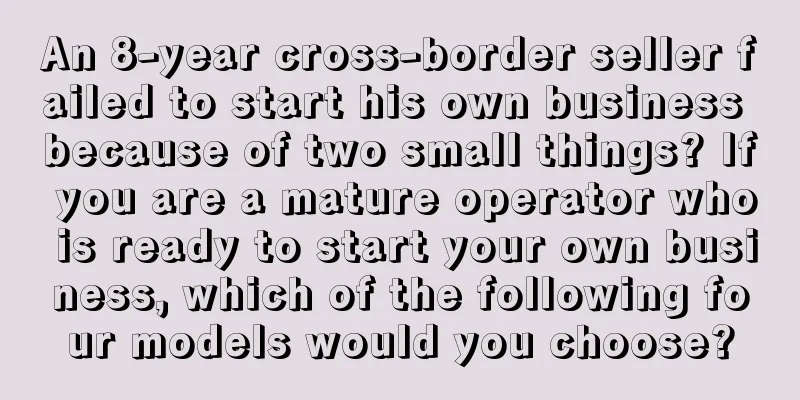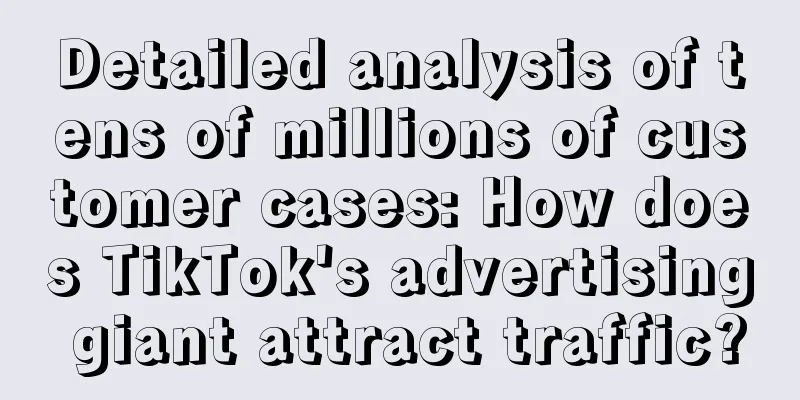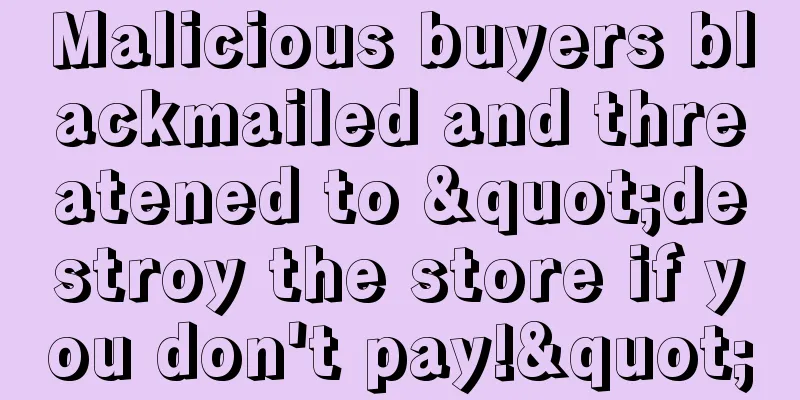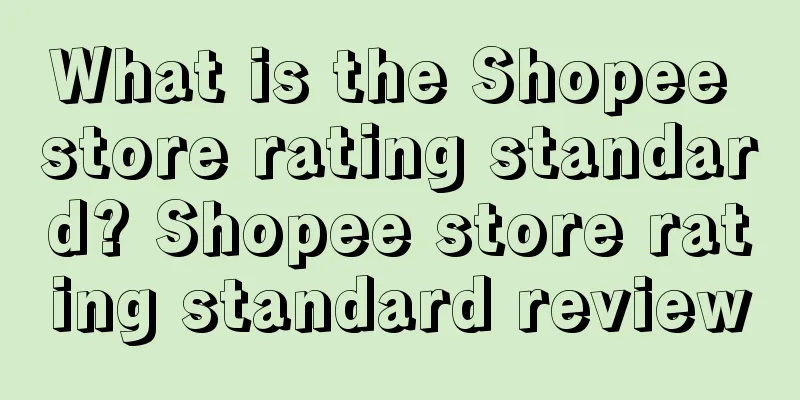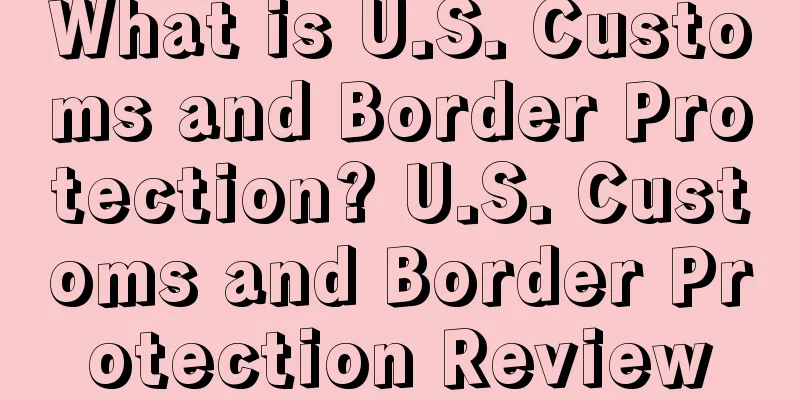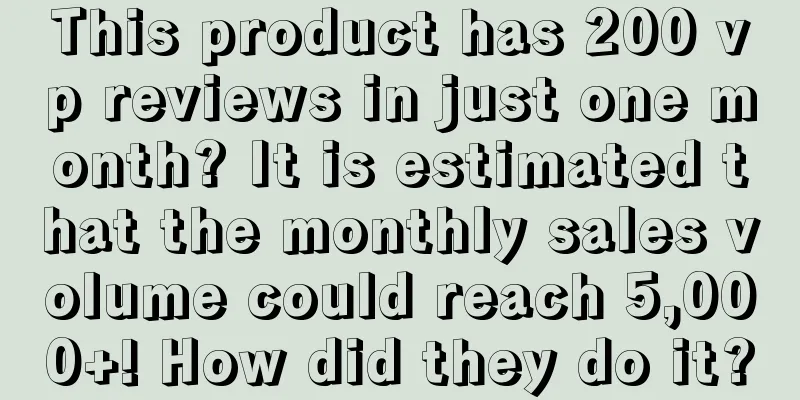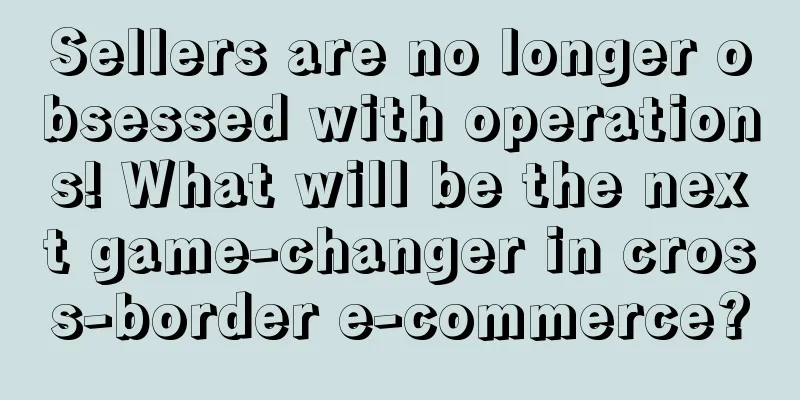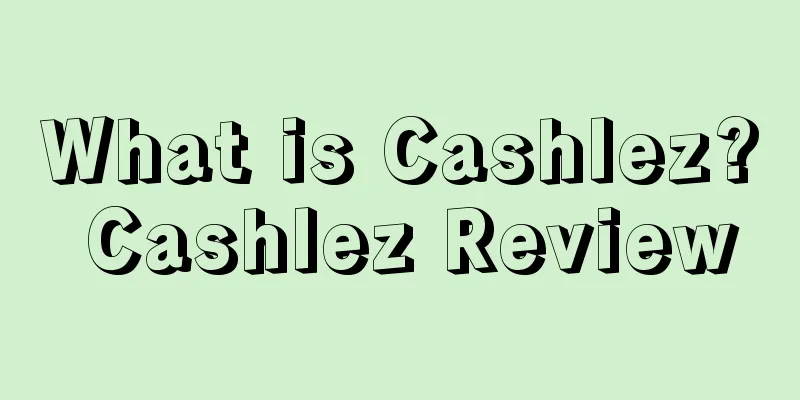|
Hello everyone, I am Matcha Milk Jelly who has been engaged in cross-border e-commerce for 8 years. This is the third time I have started from 0 to 1 and started my own business. Today I would like to share with you the results of my recent learning and thinking.
Friends who follow me should know a little about my experience. I just rejoined the company after starting my own business, and I am still responsible for the pioneering project. A friend asked me how I felt recently, and I said it was like starting a business in a different place. I feel very good, and my boss supports and my colleagues cooperate. Of course, this is also the result of spending a lot of time and energy to match the needs.
Although I have started over, it is worthwhile to review past experiences so as to live up to the past. Why did I fail in going it alone? I can summarize it as I did not do these two things well:
MVP-Minimum Business Closed Loop
Thanks to my past successful experiences, I have accumulated the courage to work alone. However, the other side of the coin is the curse of success. I once lacked respect for the market and dreamed of reaching Rome in one day. I failed to design the smallest business closed loop. Even in a familiar market, you should respect the market, listen to the market's feedback, and verify it with the lowest cost, otherwise no one will know. Let's discuss with you here, if you are an operator in a mature market and want to work alone, which of the following four models would you choose?
1. Based on the market research results, purchase 100 1688 currencies that meet key attributes and selling points for testing;
2. Choose a strong supplier and become one of the limited N sellers, win 1,000-2,000 products at a time, and establish in-depth cooperation; 3. Based on the market research results, determine the market pain points and modify the private model to pursue better market feedback; 4. Based on the market pain points and itch points, upgrade or even break through the existing product functions, apply for patents and block the market. I once chose path 3, and directly invested 80% of the startup capital in purchasing auxiliary materials, improving product technology, and investing in factory production lines. Then I quit in one step.
SOP-Standard Operating Procedure
There is a classic saying that goes, "If you can't lead a team, you can only work hard until you die." I used to just hear this saying, but never took it to heart. I believe that everyone who has the idea of working alone already has good abilities, is responsible for at least the core business of the company, and is familiar with or at least understands many other business processes.
The key problem also lies here. People have limited time and energy. If you can't replicate your abilities, you can only work hard until you die. This sentence is also for everyone in the supervisor position. It is really tiring if you can't lead the operation. Then the question is, how to lead the team? The first thing is to replicate your successful actions and form an SOP. At the same time, I recommend everyone to read a book called "The Checklist Revolution". It is best to form a form for key business processes.
Everyone should be familiar with 0 yuan purchase. I have fallen into the trap myself. The root cause is that when things are complicated, mistakes are inevitable. If you don't pay attention to the activities outside the site, the discounts on the activities inside the site will be superimposed. At this time, there is no SOP checklist to check. Once it happens, you can only cry without tears.
The above is my insight into the past. Recently, I have been constantly learning and training my financial intelligence, communication skills and leadership. If there are friends in Hangzhou who are interested, you can communicate with me and have a cup of tea and chat offline. SEEYA~
"Wonderful Reply"
Lost Uncle -Drunk in the Sutra Pavilion with half a scroll of books, sitting in the well and talking about the vastness of the sky Agree with: Matcha Milk Jelly, Andy Chats about Cross-border, Tito123, Be Your Own King, Lan Xi Ru Meng More » I would probably choose mode 1 for several reasons:
1. Although everyone says that the currency of 1688 is undesirable, you can choose others as well as you can, but you have many choices, each based on your product selection skills and unique vision, and many manufacturers with whom you have in-depth discussions can have a look at their new products or make minor changes (as long as the cost of the change is not high, the manufacturer is willing to do so, mainly to give the other party hope);
2. Low-risk trial and error is far better than betting everything on one throw. Assuming that your startup capital is the same and the unit price of the product is similar, would you order 1,000 units at the beginning or would you try 10 times and then 100 units? I tend to try 10 times, maybe one of these 10 times can make money, then we can survive. Of course, this is an ideal value, but the truth is this. In fact, betting everything on one throw is too risky, especially when we don’t have a deep understanding of the market, the risk is extremely high, and the final result should still be based on the market feedback.
3. You must also be selective in currency. If you are not familiar with the category, don't go for a style with large market capacity and serious homogeneity. It is highly likely that you will not be able to compete with the people ahead. We try to choose products that are in demand in the niche market. No matter how many orders are placed every day, as long as there is profit, don't aim too high. This will increase the probability of winning. If you are lucky enough to have 2-3 products that can make a profit, that would be great. With this as a base, we can accumulate small gains into large ones and small victories into big ones. Guangzhou Baiyun First Love • Guangzhou • 2024-04-29 15:47 Boss, I support your approach!
I have also been doing it according to your method recently. Although I have encountered copycat sales along the way, overall, my store is making money every day and can survive. This is my possible future development direction.
1. Based on your own profitable products, dig deeper, understand the market, and find out what pain points there are. Then see what ready-made products on 1688 can solve this problem, and slowly accumulate your own profitable styles. In this process, you can not only slowly understand your current category through trial and error, but also through imagination, try to summarize, and slowly exercise your ability to select products in this market! (During this period, I may position products according to the specific consumer groups in my category, and focus on products for this group of people). The purpose of this stage is to survive and then to understand and grasp the hobbies and preferences of this group of people through continuous testing, as well as the price range.
2. The second stage is when my basic foundation is stable. The monthly profit of the store is enough to support the monthly inventory and the styles selected from 1688. There is also a certain amount of working capital. If you are allowed to open a mold with the extra money, I will add functions to the existing products that I can sell. Slowly form my own product matrix and gradually increase the risk sharing of stores. Develop private mold products for multiple stores and multiple brands to meet the needs of consumers in my category. What I need to do at this stage is how to survive safely for a long time.
Lost Uncle • Shenzhen • 2024-04-29 17:04 @广州白云第一深情: Yes, I agree with your approach, especially the segmentation of the crowd. This is a very good idea. Wait until you have accumulated some experience, and then do some things with thresholds, such as micro-innovation, mold opening, patents, etc. The ultimate goal of a startup is to survive first, and then consider long-term development after surviving and doing well.
Matcha Milk Jelly • Hangzhou • 2024-04-30 16:11 Thank you for your answer, it is very sincere. I also choose this now, so I put forward the concept of MVP.
Lost Uncle • Shenzhen • 2024-04-30 16:21 @抹茶奶凝: Well, keep going. I am also working alone. We discussed with each other, so it may not be correct.
Summer • Guangzhou • 2024-04-30 16:39 Third, I really made a big mistake. I made a product with a large market capacity and serious homogeneity, and it was also a low-priced product. In the end, I failed miserably and am currently clearing out my inventory. . . .
ZGYjuaner123 • Shenzhen • 2024-04-30 17:43 @Summer的夏季: Not necessarily. If the market is big, it will be easier to place orders. It is not easy to find a blue ocean. Is it because your product has no advantages?
The wind -like seller • Jinhua • 2024-05-01 16:25 @Summer's Summer : I am currently selecting a product like this, and the factory is about to start producing the products. However, we have differentiated the appearance of our products, and have made adjustments to the price-performance ratio. I don't know what the result will be, and after repeated analysis and verification, I have determined that the worst result is to clear the stock at cost price.
Lose weight • Dongguan • 4 days ago I hope you can share with me how to balance the cost of art design in such a high-intensity test and selection? Do you only make window pictures and not A+ pictures?
Lost Uncle • Shenzhen • 3 days ago @减肥吗: This is not bad. It is similar to the operation mode of fine products in Jingpu. The key is to see how many products the developer produces each month. We suggest 2-4 products are more appropriate. The art designer can be configured according to the workload. Generally speaking, the early stage development, operation and art designer can be configured 1-1-1. Our own experience.
Anonymous user
Agree with: hbz817, Cross-border Wheat Home, Matcha Milk Jelly, Small Steps and Fast Walk, Summer More » It's a bit vague. If I have to choose, I would choose 3+1. I would like to share some personal experience of working alone. If you don't like it, please don't criticize me. It's purely based on experience. It's very dry.
I have worked on Amazon for more than ten years and I consider myself experienced, but my success rate in selecting products is still only 25%. Success means that the product enters the Top 100 (Top 50 in a small category) and stays there for a month. I never go all-in when selecting products, and I strongly advise you not to go all-in, because going all-in will lead to failure. As mentioned above, it is normal for the success rate of product selection to be around 10%.
Before entering a category, I will spend a lot of time observing and analyzing, and then select 2-5 styles, 50-100 pieces of each, and invest in trial and error, and make adjustments based on market feedback. Therefore, I think 2.3.4 is a false proposition. Opening private models/applying for patents/exclusive underwriting are options that are considered based on the degree of competition only after you have a certain understanding of the product market and have proven potential through early trials. They are not even necessary options. If you have them, that's great. If not, it's enough to cooperate with the factory to modify the style, and you'll still get a lot of orders.
In fact, I can give you a few directions for product selection. Integrate the supply chain (extremely low prices, factory exclusive), product differentiation (improvements on popular products), and category segmentation (variants of popular products). The market capacity must be large to have room for development. Basically, I don’t do small and beautiful unpopular categories. I’ll just give them to the players who distribute goods. A few orders a month are not enough to cover my storage fees. Of course, I’ll forget about the bloody category of the three lucky treasures. The improvement of popular products is saturated, and I can’t roll it up.
In the early stage of starting a business alone, when there is insufficient capital, there must be profits. Even if there are ten orders a month, there must be profits to support subsequent development. I agree with the view of the "Lost Uncle" above. Low-risk trial and error, avoiding competition and doing niche business are very important in the early stage of starting a business alone. Otherwise, you will only work alone for one year and earn a lot of inventory. Working alone for two years, you will be in debt.
As for SOP, you don't need to consider it before you have a monthly sales of one million. Many companies still don't have SOP even if they have a monthly sales of one million, and they all rely on the boss to have the final say. Only when you develop into a super-seller like Aukit/Paton/Savi/Tongtuo, do you need to consider it. What's more, what they have done is already very good, so you can just copy it. Speaking of this, it is still recommended for the masters to work alone. It is best to work in a large company for a few years. You still need to have work experience and work alone. It is not recommended to work alone right after graduation. The thing about vision and experience is that you can see farther by standing on the shoulders of giants. Matcha Milk Jelly • Hangzhou • 2024-04-30 10:09 In fact, everyone has SOP, but the difference is whether it is internalized or externalized, and whether it has been systematized and proceduralized. At present, I am starting from 0 to 1, and I also have to consider leading people, so I have this aspect of thinking.
Anonymous user Agree from: Matcha Milk Jelly, Cross-border Wheat Home, BerryBie, liang010888 Paste the definition:
1. Minimum business closed loop (minimum viable product): MVP: Minimum Viable Product Through light development investment (minimum manpower and funds), first verify the market, try and error at the lowest cost, and make real-time adjustments based on user feedback. "Minimum": the investment is small enough and the cost is low enough. "Feasible": no matter how small the trial and error method is, it is necessary to ensure that the minimum business process is completed and a small closed loop is formed in a small scenario.
I guess the poster wants to say that the whole process of product selection-delivery-promotion-repayment should be completed once? ?
2. SOP: Standard Operation Procedure It is to describe the standard operating procedures and requirements of an event in a unified format to guide and standardize daily work.
The essence of SOP is to quantify the details. In more common terms, SOP is to refine and quantify the key control points in a procedure.
I guess what the poster means is that there should be a set of standardized text descriptions of itinerary?
The mountains and rivers are difficult to cross - standing on the top of the mountain, walking deep in the sea. Agree with: Little Potato, I am Niuchui In our industry, a hit product is actually a matter of probability. As for funding and other things, it is nothing more than a matter of trial and error opportunities.
For most people, they just want to make some money, so the most reliable way is to start with the resources that are available to them. I won’t say much about this, those who understand will understand. So many people say that luck is better than hard work. Of course, when luck doesn’t come, you can improve yourself.
Your own strength, operational technology, management or whatever is fine. As for fission or replication, to be honest, this is not very practical in our industry. The money you get is yours, unless you want to make money from others or play with other people's money.
Anonymous user Support from: Matcha Milk Jelly I am doing both 1-2. From my personal experience, I think these two are suitable for starting a small business with 0 resources. Maybe 1 is not easy to expand and become strong, and 2 ordinary people may not be able to negotiate suitable products with manufacturers.
3. Try to cooperate with a manufacturer to reduce the cost of trial and error in mold opening. The current experience is not very good. On the one hand, the manufacturer's cooperation may not be high (the manufacturer hopes to start a company in partnership, but I feel it is too limited and temporarily decline), and on the other hand, the feasibility and development experience of my own products are not sufficient. However, if the ability is available, this path should bring more benefits than 1-2.
4 I feel that this can only be achieved by a strong product team. The partners must at least be mature product leaders, or at least have better product knowledge and experience and then look for outsourced development.
The approach of almost all-in path 3 is actually a bit of a gamble. I don’t know if it’s because of the multiple mold product experience in work experience, but generally, those who work alone still play with what cards they have, and do business mainly for profit. However, I have gained valuable experience after trying it once. I believe that the big guys will become more and more courageous and rebound from the bottom.
Me and the Past - Amazon Operations in 2022 Agree with: Duole Xiaojiqiao, The Empty City Has Gone, Lillian1, heyibs, Why is there only one order? More » I chose mode 1, and it has been somewhat successful so far.
The new products that I have selected recently are basically profitable and have received orders. I am currently purchasing the second batch, and the quantity will be larger, but not too much. I would rather run out of stock than have too much at one time, and I am confident that I can promote them again.
Sales have also been growing slowly recently, with a daily sales target of US$650 next month.
The same model is ready to be replicated to the European site. Now we are also applying to register a new account to enter Europe. Currently, the new account has reached the stage of registering VAT. |
